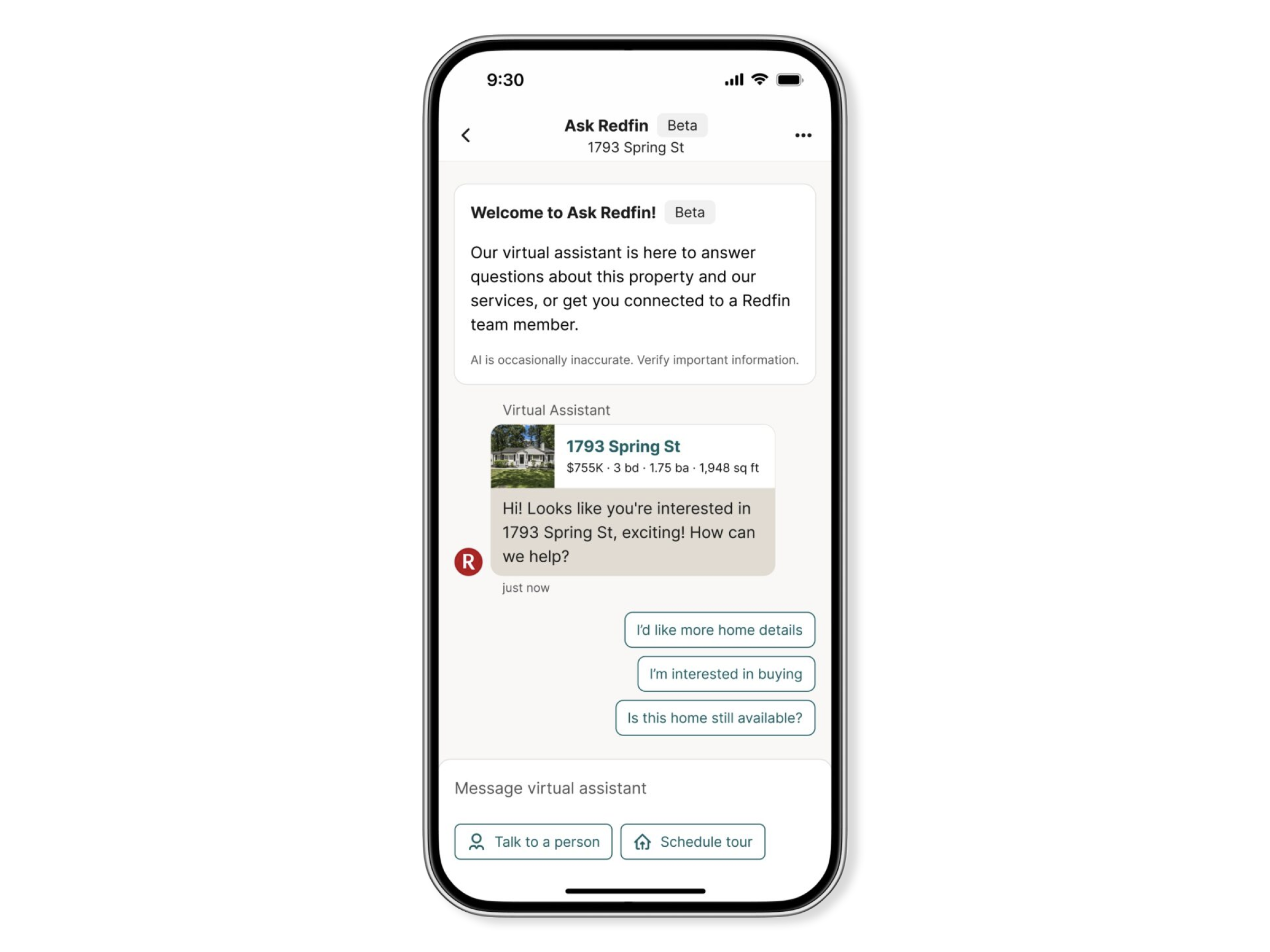What is an AI chatbot? (Benefits, use cases, & key features)

What is an AI chatbot?
An AI chatbot is a software program that simulates human conversation with an end user.
Unlike rule-based chatbots that follow preprogrammed scripts, AI chatbots use natural language processing (NLP) and machine learning (ML) to interpret human language and generate dynamic responses to users without assistance.
This allows users to lead the conversation in their own words, and get back automated yet highly relevant answers for a wide variety of topics.
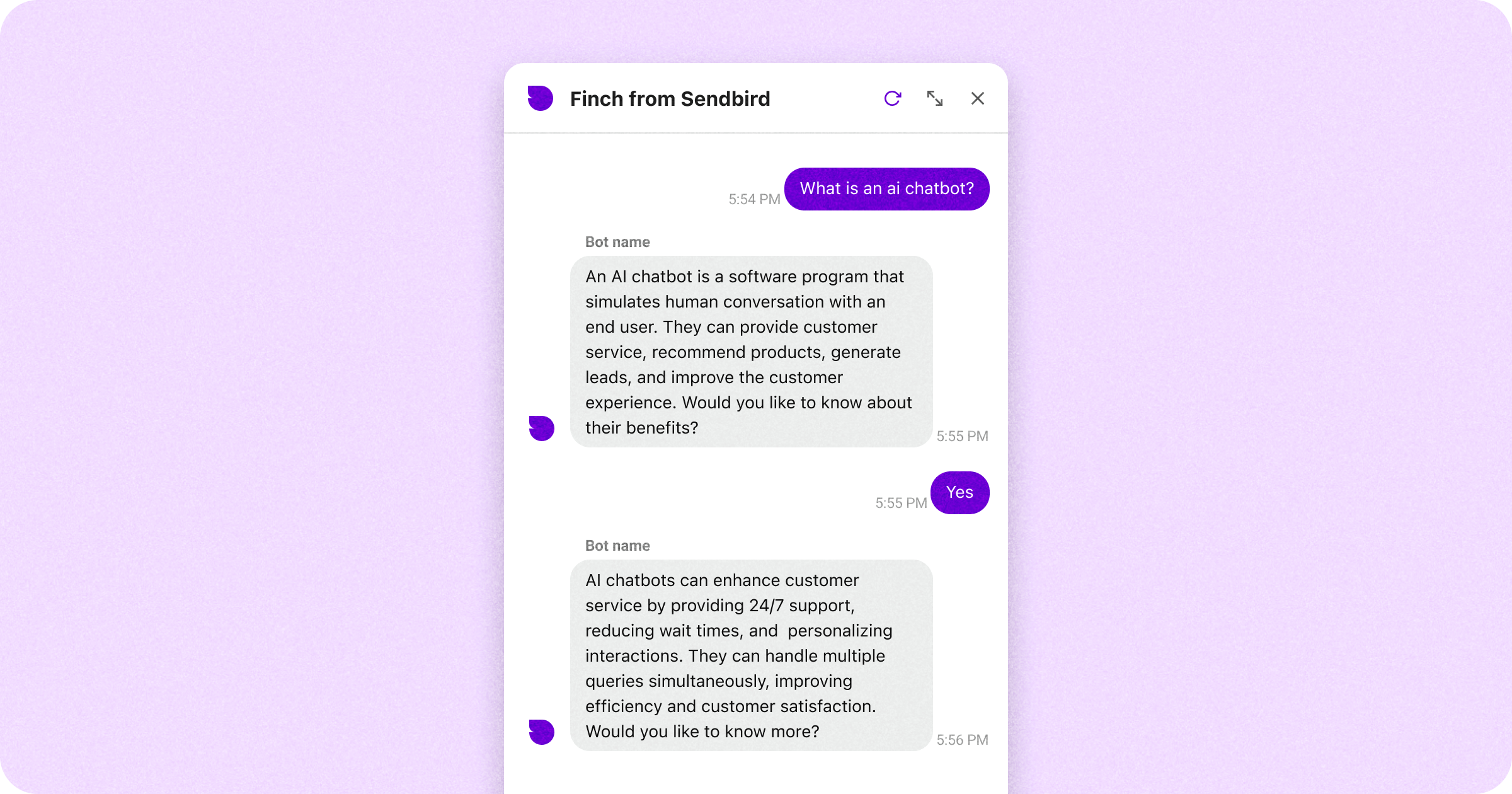
What’s more, AI chatbot software can improve its responses over time, adapting to user inputs and ingesting new data that allows the chatbot to handle a wider range of queries with ever-greater accuracy and expertise.
This flexibility makes AI chatbots effective in various use cases on websites and mobile apps, including AI customer support, AI lead generation, personalized ecommerce assistance, and more.
If you prefer, you can watch a short video below that explains “what is an AI chatbot?” and how they’re used in business.
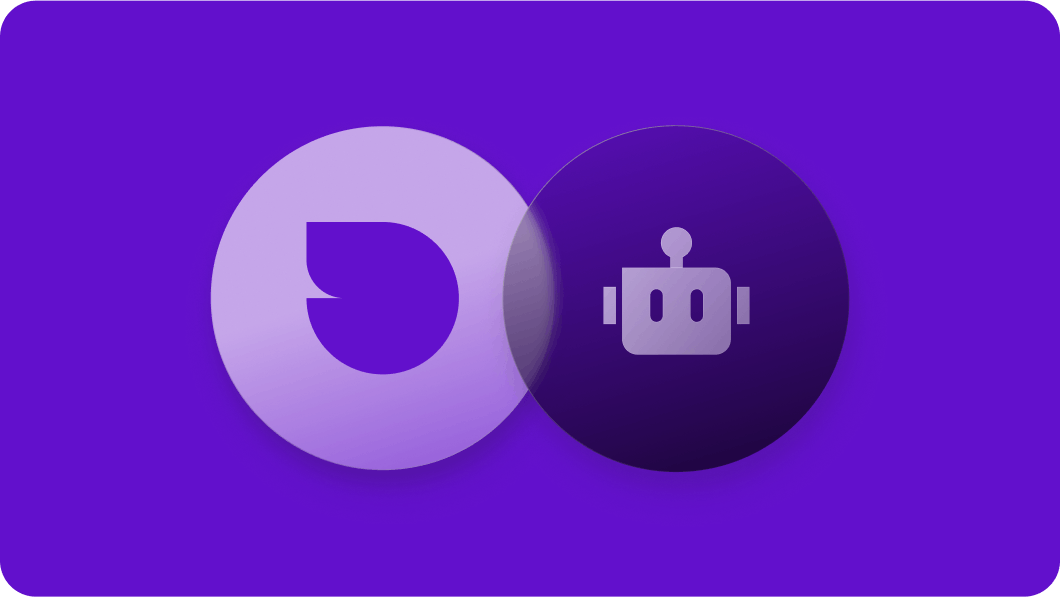
Do all chatbots use AI?
Not all chatbots use AI. Traditional chatbots are rule-based, meaning they can only provide answers to users based on a predefined script. If the user asks a question that doesn’t match the keywords or workflow prepared by the chatbot’s programmer, a traditional chatbot won’t be able to answer.
An AI chatbot, on the other hand, uses AI like machine learning and natural language processing to interpret human language as it's written. This enables the chatbot to engage in natural-feeling conversation on topics outside of preprogrammed commands and provide contextually relevant answers to a wide variety of questions posed in any syntax.
What are the benefits of using AI chatbots?
AI chatbots add a conversational layer to websites and mobile apps that helps to increase engagement, drive sales, and level up the customer experience.
Here are the main AI chatbot benefits:
24/7 availability: Like an always-on emissary for a business, an AI chatbot provides round-the-clock service to users (any number of them) right when they want it. This helps to improve customer satisfaction and ensure no missed opportunities outside of business hours.
Self-service options: Most customers prefer to use self-service options for simple issues and everyday scheduling. AI chatbots can point users to resources like FAQs and knowledge base articles, or let users schedule and modify appointments on their own.
Flexible: AI chatbots can be custom-trained on first-party data to provide accurate responses about any business or industry, making them effective in a wide variety of use cases like AI for customer service, product recommendations, AI lead generation, and more.
Affordable: The total cost of ownership for AI chatbots is low, especially compared to the cost of hiring employees. AI chatbots can also reduce operational costs by automating routine tasks like customer service, appointment scheduling, or returns.
Greater efficiency and productivity: By automating repetitive tasks like answering FAQs, processing returns, or managing reservations, AI chatbots save time for customers and businesses, improving operational efficiency and productivity while adding a layer of convenience. It’s a win-win.
Enhanced engagement and customer experience: AI chatbots can engage customers 24/7 with useful content, tailored product recommendations, even suggest next steps. This personalized interaction helps to keep users engaged while creating a more seamless experience that improves customer satisfaction and loyalty.

Leverage omnichannel AI for customer support
How does an AI chatbot work?
If you’re new to AI chatbots, it may feel like a challenge to use this powerful new business tool. The truth is, using an AI chatbot is so easy that anyone can do it, and without coding.
All you need is a good AI chatbot software and some general knowledge about how an AI chatbot works. Here’s a basic overview.
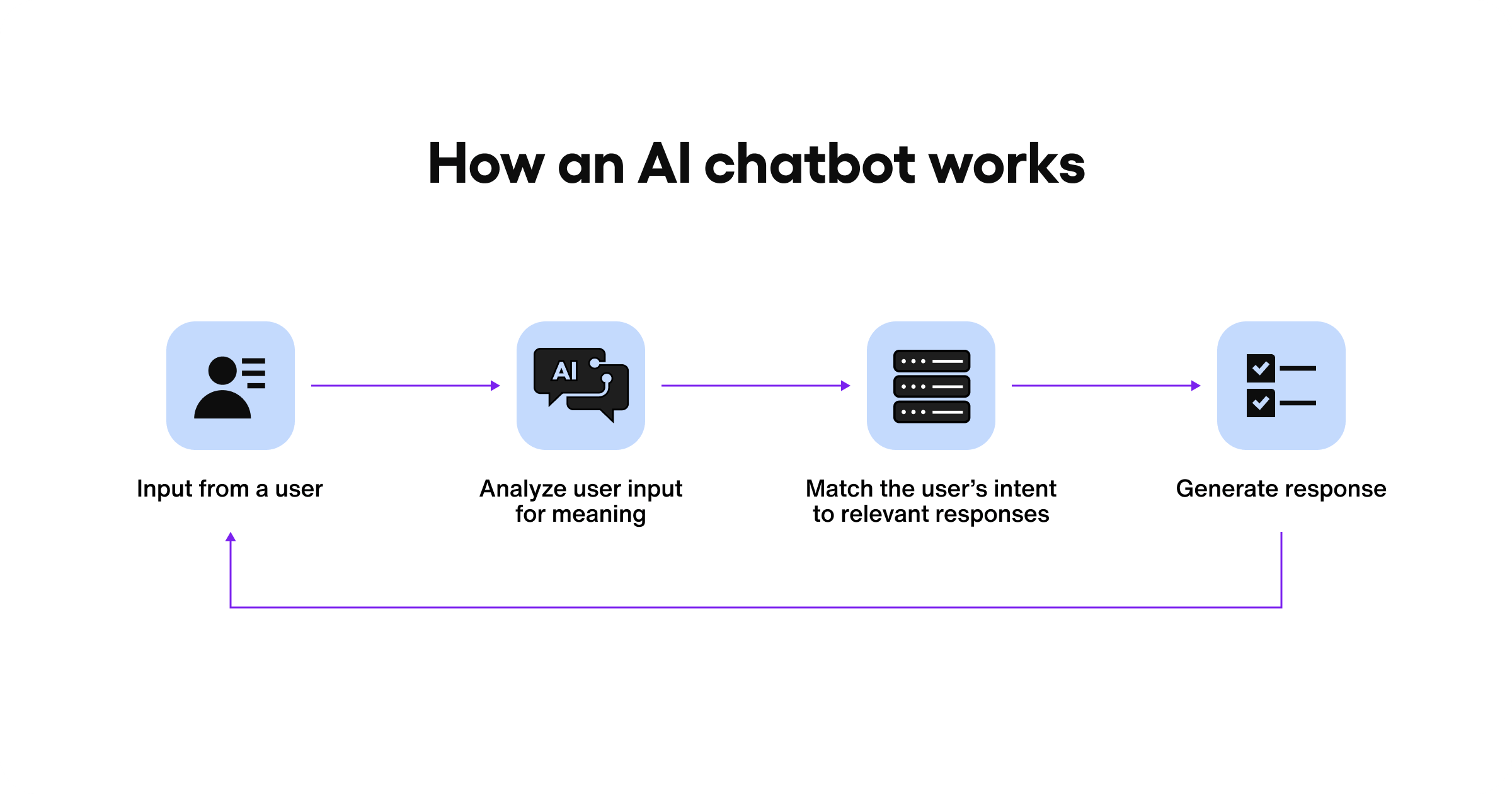
At a basic level, an AI chatbot receives a user’s input, interprets the input, and transforms it into a relevant output.
For example, if a website visitor asks a question, the chatbot will analyze factors such as intent, tone, context, and sentiment, and then return the most accurate and relevant response.
Before an AI chatbot can provide accurate answers about your specific business or industry, it must be trained on business-specific data. During training, the chatbot will be fed data and documentation (like internal wikis or product documentation) in a process called ingestion.
Once trained, the AI chatbot can answer complex queries about your business with high levels of accuracy. For example, a custom-trained chatbot can assist users with specific steps during mobile app onboarding, instead of just offering basic information about onboarding in general.
If training a chatbot sounds about as easy as training a lion, don’t worry — it’s actually simple. With Sendbird’s AI Chatbot, for example, you just drag and drop files into the bot trainer interface, add URL links, or connect the chatbot to Google Drive, Notion, or Salesforce.
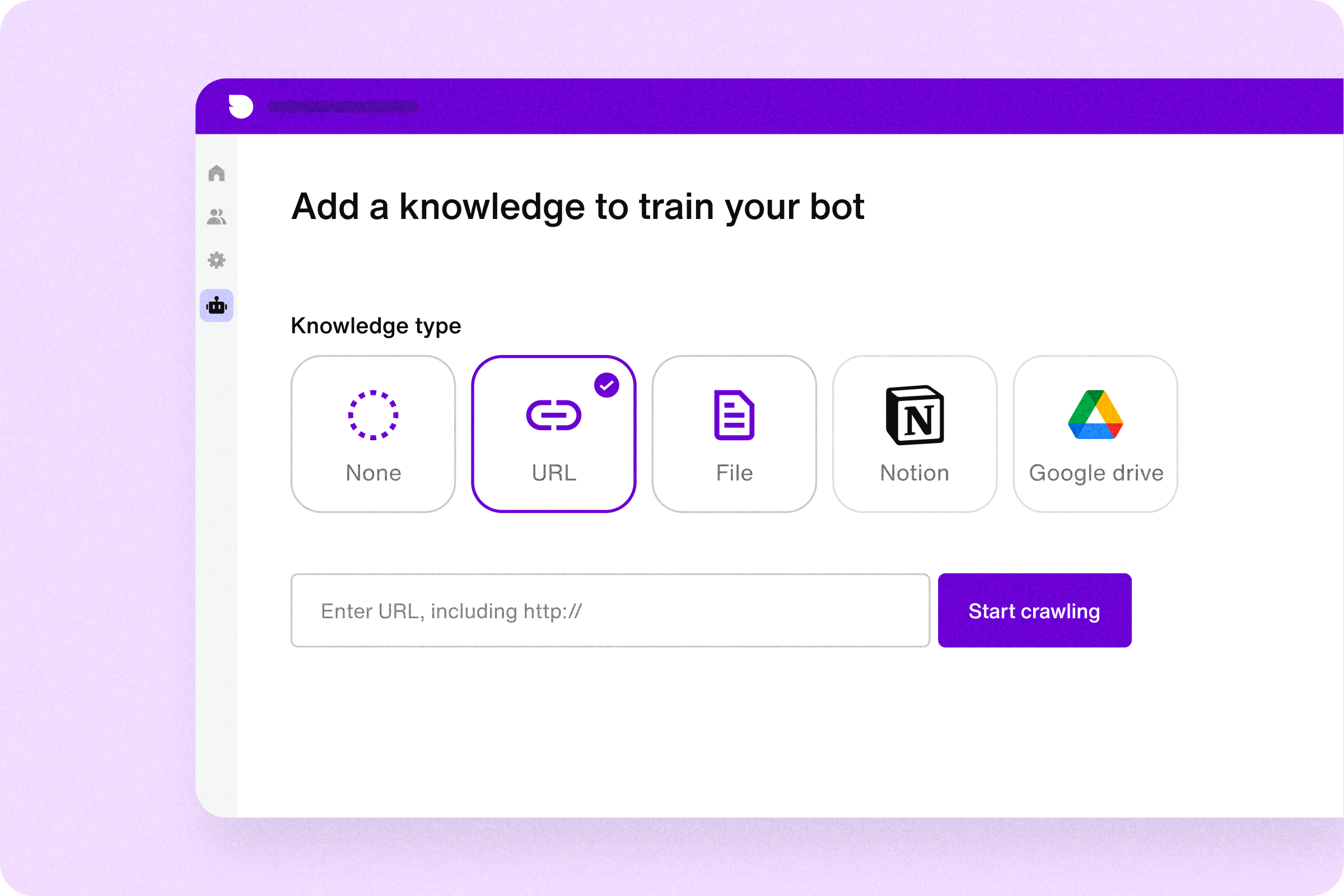
Now that you’ve got a basic idea of how an AI chatbot works, you might wonder about how you can use AI chatbots to help you achieve your business goals.
AI chatbot use cases
With many companies competing for customers based on digital experience, it’s no surprise that 72% of business leaders say expanding AI and chatbots across the customer experience is a priority.
Here are the most common use cases for generative AI chatbots for business.
AI chatbot for customer service
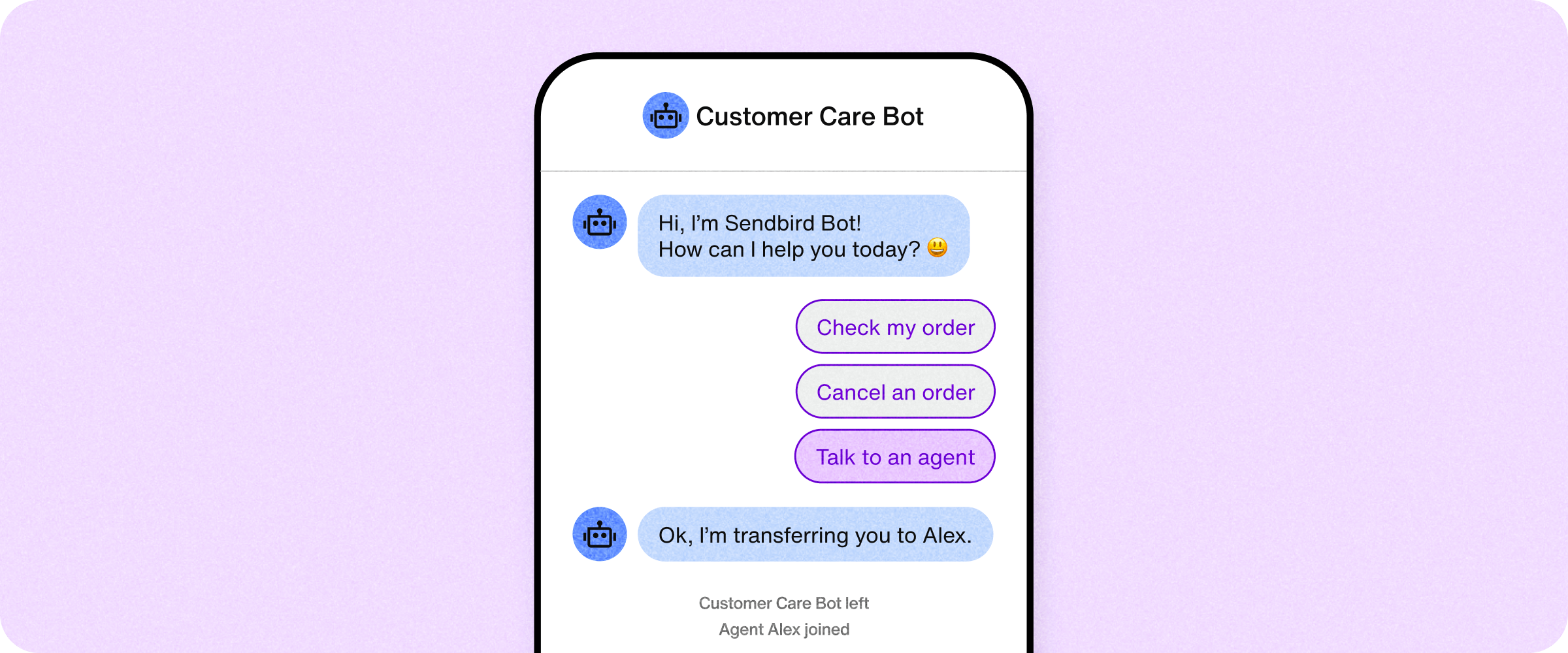
AI chatbots for customer service handle repetitive tasks, respond to FAQs, direct users to self-serve resources, and route customers to support agents when necessary.
Capable of handling 80% of routine support tasks and customer questions, an AI chatbot for customer service allows agents to focus on complex issues that require a human touch. If the customer needs to escalate the issue, the chatbot can summarize and transfer the conversation notes to the agent, for a seamless handoff that improves productivity and customer satisfaction.
Customer service AI chatbots can be integrated seamlessly across support channels to deliver fast, accurate, and personal assistance that cuts costs while boosting efficiency and CSAT scores. To learn more, you can check out our ultimate guide to AI chatbots for customer service.
AI chatbot for ecommerce
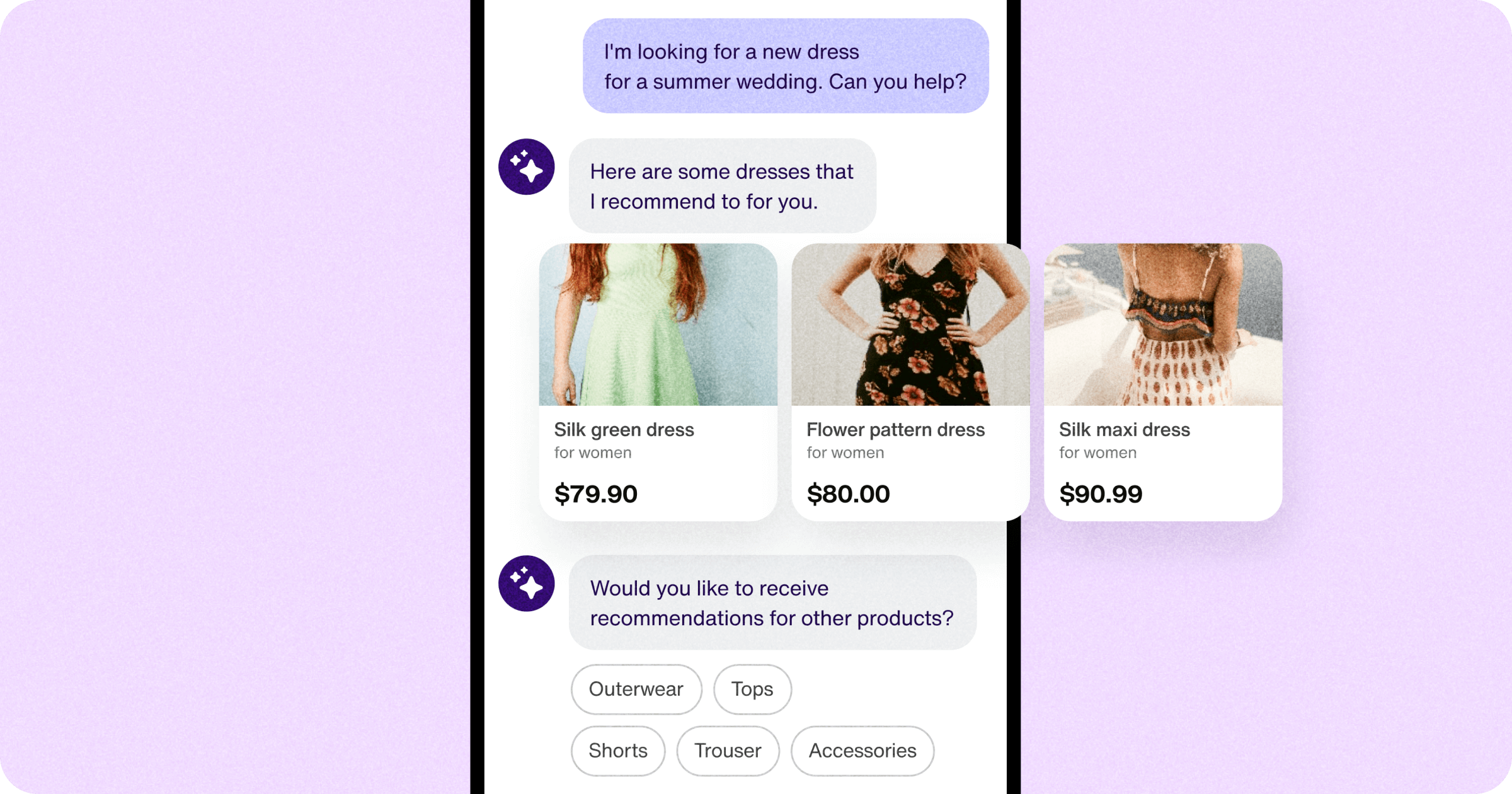
With an AI chatbot for ecommerce, a business can make personalized product recommendations, offer support, and provide tailored experiences to shoppers while saving time and operational costs.
For example, a Shopify AI chatbot can provide customers with order status and tracking information, inventory availability, assist with returns, or guide shoppers to the right product for them based on history and preferences integrated from a CRM, third-party tools, or support channels like Facebook Messenger.
Half recommendation engine, half support channel — an AI chatbot for ecommerce ultimately helps to differentiate the online retail experience for customers, adding convenience and product guidance that leads to greater purchasing and customer loyalty.
AI chatbot for on-demand services
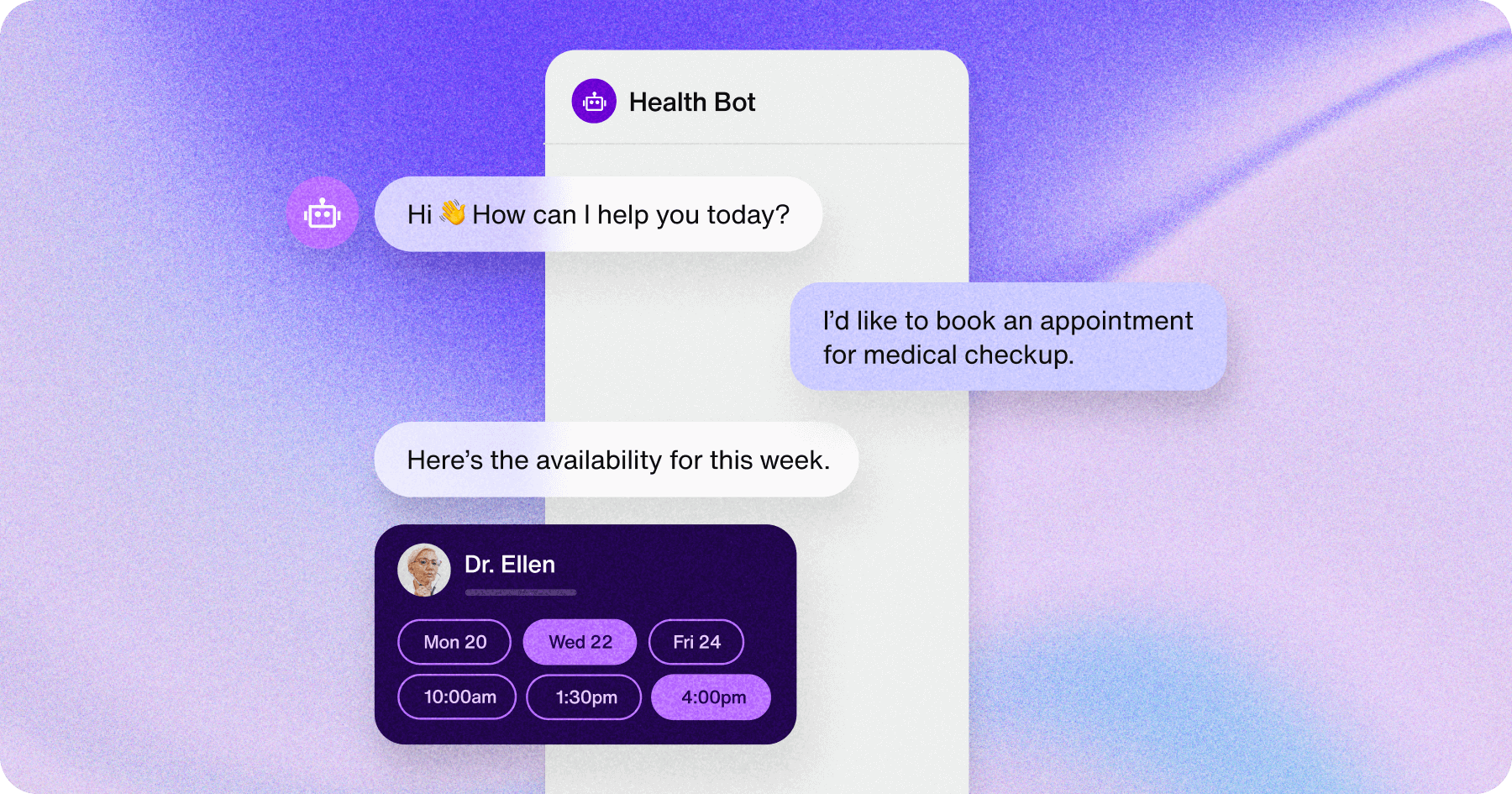
AI chatbots function as a digital concierge for service businesses, able to seamlessly handle service requests, scheduling, and support in a way that’s both scalable for businesses and satisfying for customers.
AI chatbots for healthcare, for instance, enable patients to schedule and modify appointments on their own in the mobile app. This frees up employees to assist in-office patients for greater efficiency and productivity, while improving appointment attendance and health outcomes.
Another example is Capital One, which uses a finance AI chatbot to help app users manage their account, check balances, and shop offers via conversational interactions. The bank bot accommodates over 2,200 different ways for a customer to request to see their balance.
Overall, AI chatbots help service businesses in many industries to meet users' requests instantly and streamline operations, lowering costs while driving customer engagement and satisfaction.
AI chatbot for customer feedback
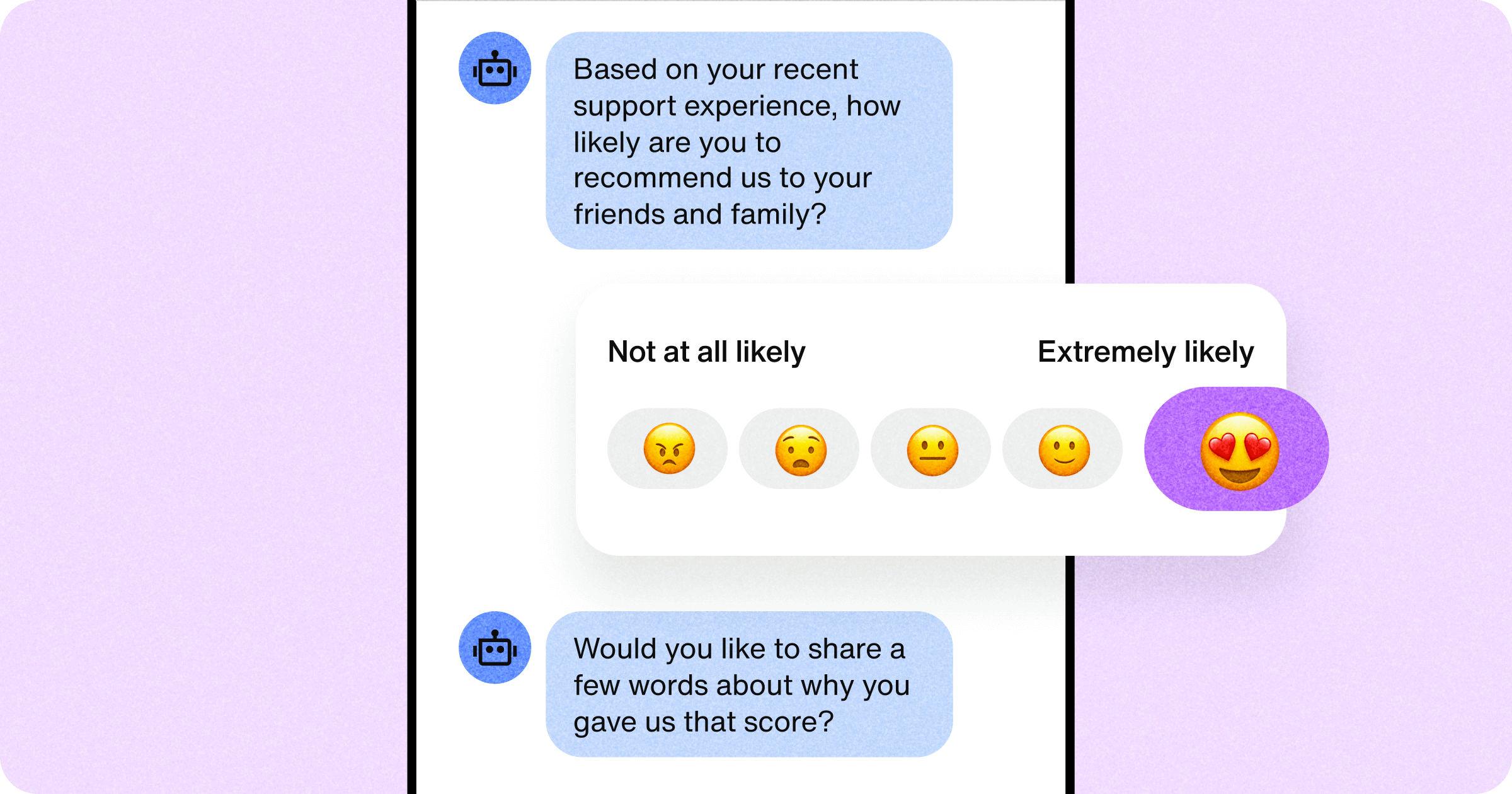
AI chatbots can collect feedback from customers by presenting them with surveys or post-interaction questionnaires. This helps marketing, support, and product teams to automate feedback collection, gaining valuable insights that inform data-driven improvements to products, processes, and customer experience.
AI chatbots can also evaluate users' intent and emotional state based on phrasing and word choice using their sentiment analysis capabilities. This allows the bot to detect whether a user is feeling positive, negative, or neutral about interactions, adding context to data collected about products browsed, frequently asked questions, or preferred communication channels.
Finally, by analyzing and summarizing customer interactions and insights, a feedback bot can help identify trends and insights that can help a business to reduce churn and drive success.
AI chatbot for lead generation

When used for lead generation, AI chatbots are a conversational way for a business to convert website or app traffic into qualified leads without human intervention, all while offering 24/7 support.
An AI lead generation agent can qualify prospects as it engages them, capturing information seamlessly as customers inquire about products, services, or support. To achieve conversion, the chatbot presents the prospect with a data collection form if certain conditions are met in the chat session, such as keywords, message volume, repeat engagement, and more.

Say a B2B prospect starts a conversation with an AI chatbot. The bot asks a qualifying question about budget range or required capabilities, and based on the user’s answer and prior history, either:
Continue asking qualifying questions
Showcase relevant products, services, or demos
Present a conversational form to collect lead information
Send them to the sales team directly
AI for lead generation can ensure that a business never misses a lead, even when the sales or support team is unavailable outside of normal business hours.
Redfin: A case study in AI lead generation chatbots
Using Sendbird, the real estate platform Redfin built a custom AI chatbot to serve as a virtual assistant for inbound lead engagement. Following deployment, the AI chatbot for real estate reduced time for agent introductions, and Redfin saw 93% of users return to the app within a week. To learn more, read the full case study.

Delight customers with AI customer service
AI chatbot features to look for
Once you know the purpose of your chatbot, the next step is to choose the best AI chatbot software for the job. Here are some key AI chatbot features to consider as you weigh your options.
Platform integrations

A good AI chatbot software will offer seamless integration with key platforms and third-party tools. This includes your CRM, support software like Salesforce, ecommerce sites like Shopify, automation such as an AI chatbot for Zapier, plus customer messaging channels such as WhatsApp and SMS.
Integrations are crucial because they enable the bot to leverage first-party data and the functionality of third-party tools. This allows the chatbot to automate processes and create a rich, tailored experience for customers—all while feeding insights back to your stack to improve business performance.
Chatbot builder (No-code)
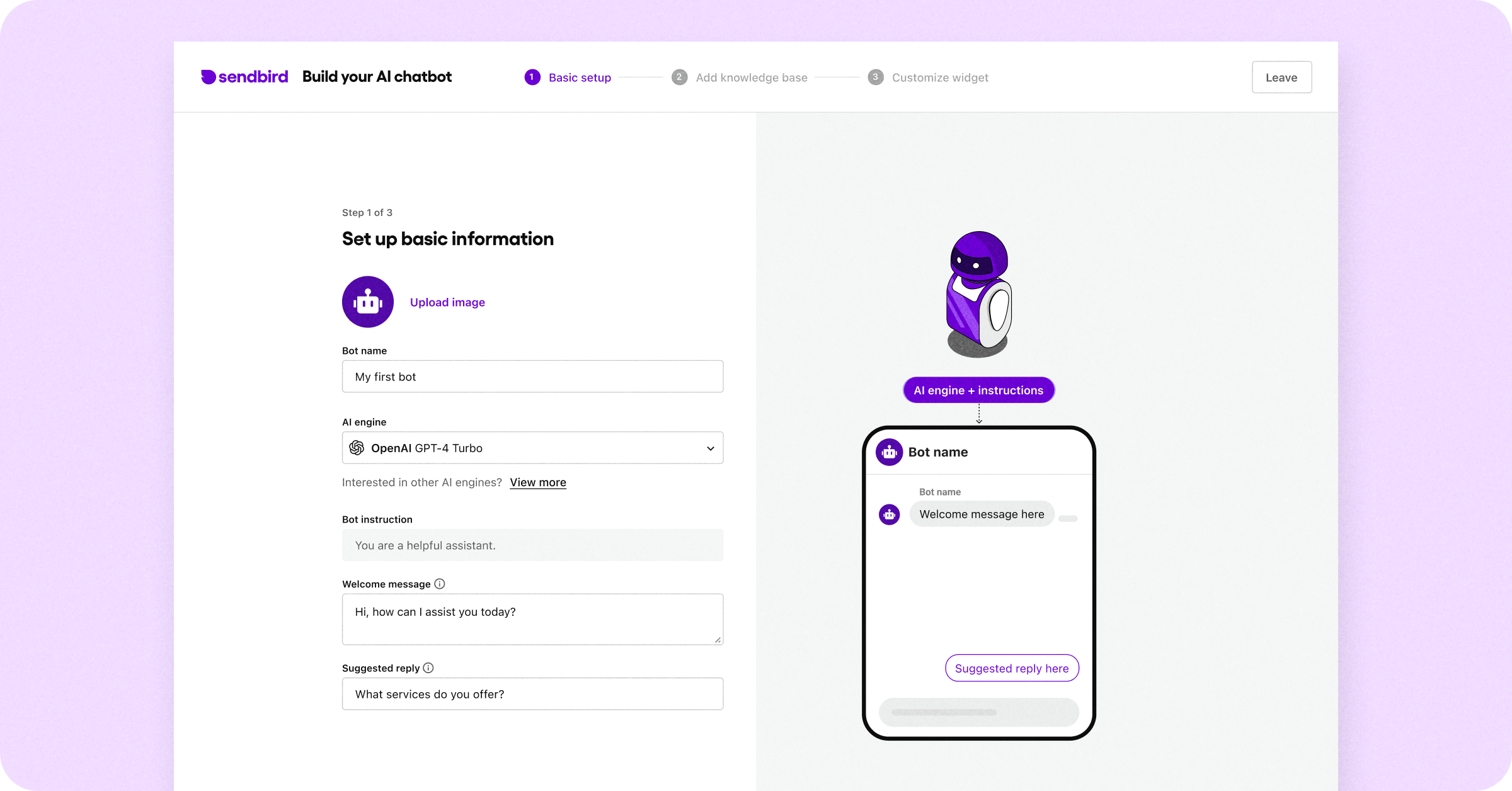
With a no-code chatbot builder interface, it only takes a few minutes to create and deploy a chatbot on your website or mobile app. This key features should allow you to:
Define bot behavior and personality with AI prompts
Train the chatbot on your business data quickly
Choose the LLM you want to use (e.g., GPT 4.o, Claude 3.5)
Customize the widget design
Test the chatbot’s response quality before it goes live
Deploy the bot via integrations to your site or app
Customization
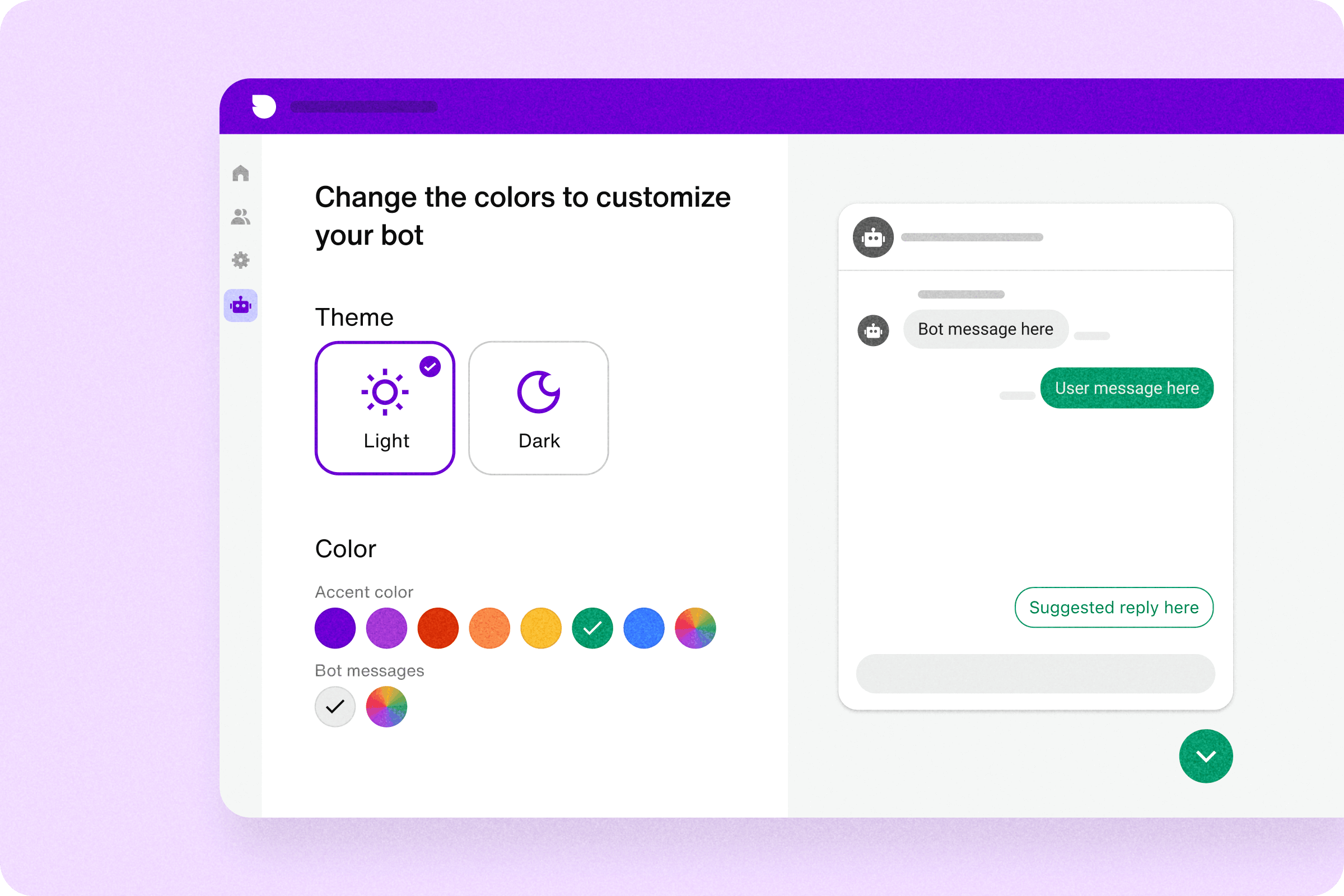
Since an AI chatbot is an extension of your brand, its appearance and the content it provides should reflect well on your business. To maintain your brand identity, look for an AI chatbot that allows you to easily customize the look and feel of your chatbot widget in the following ways:
Colors
Theme (light/dark)
Widget icon
Message color
Display name
Voice and tone
Response workflow builder (No-code)
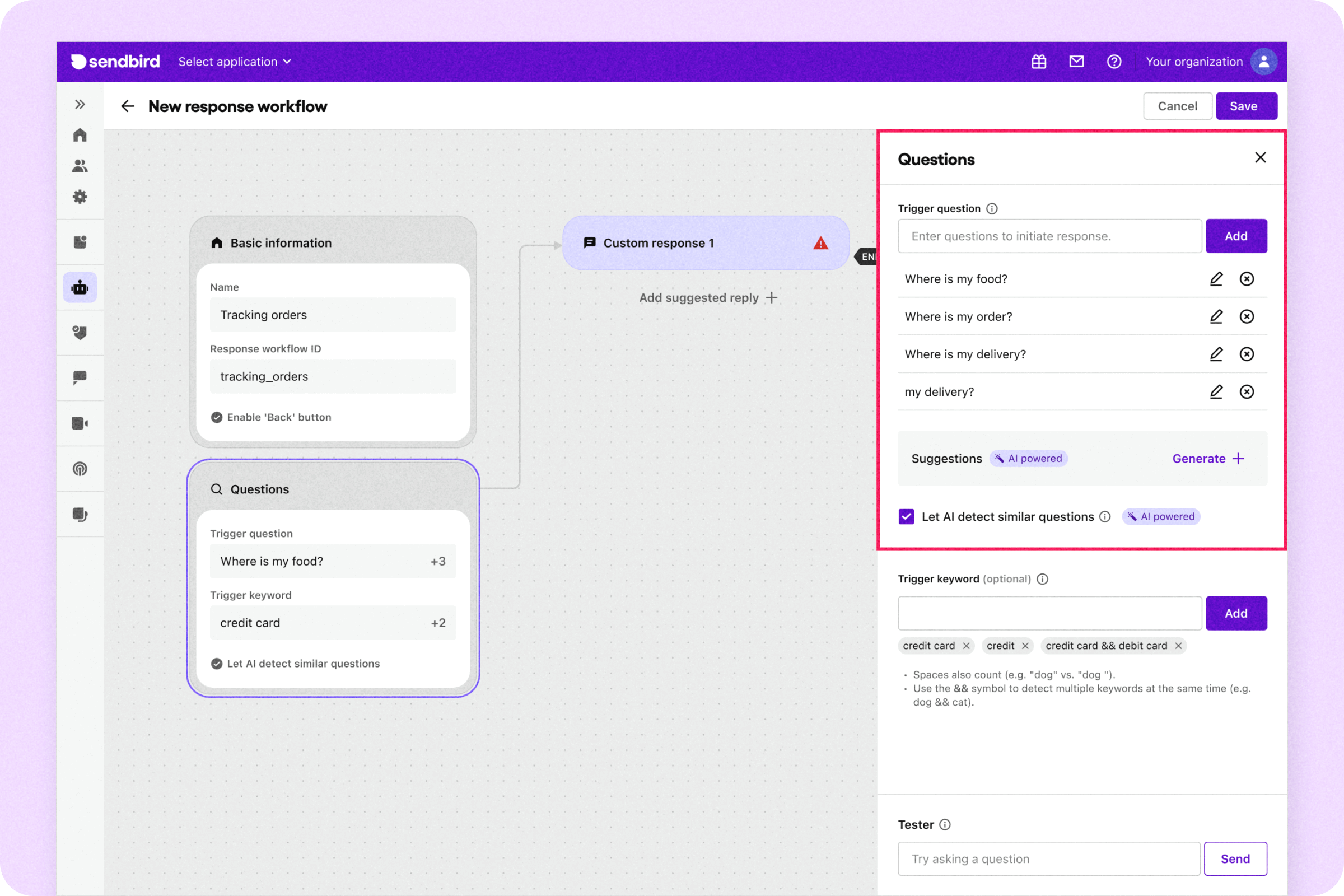
A response workflow allows you to ensure that users receive a specific answer to certain business-critical queries or common questions, such as pricing or demo requests.
By defining how the bot will respond to particular queries in advance using a response workflow builder, you can guarantee that users get the perfect answer to key questions every time.
Bot analytics
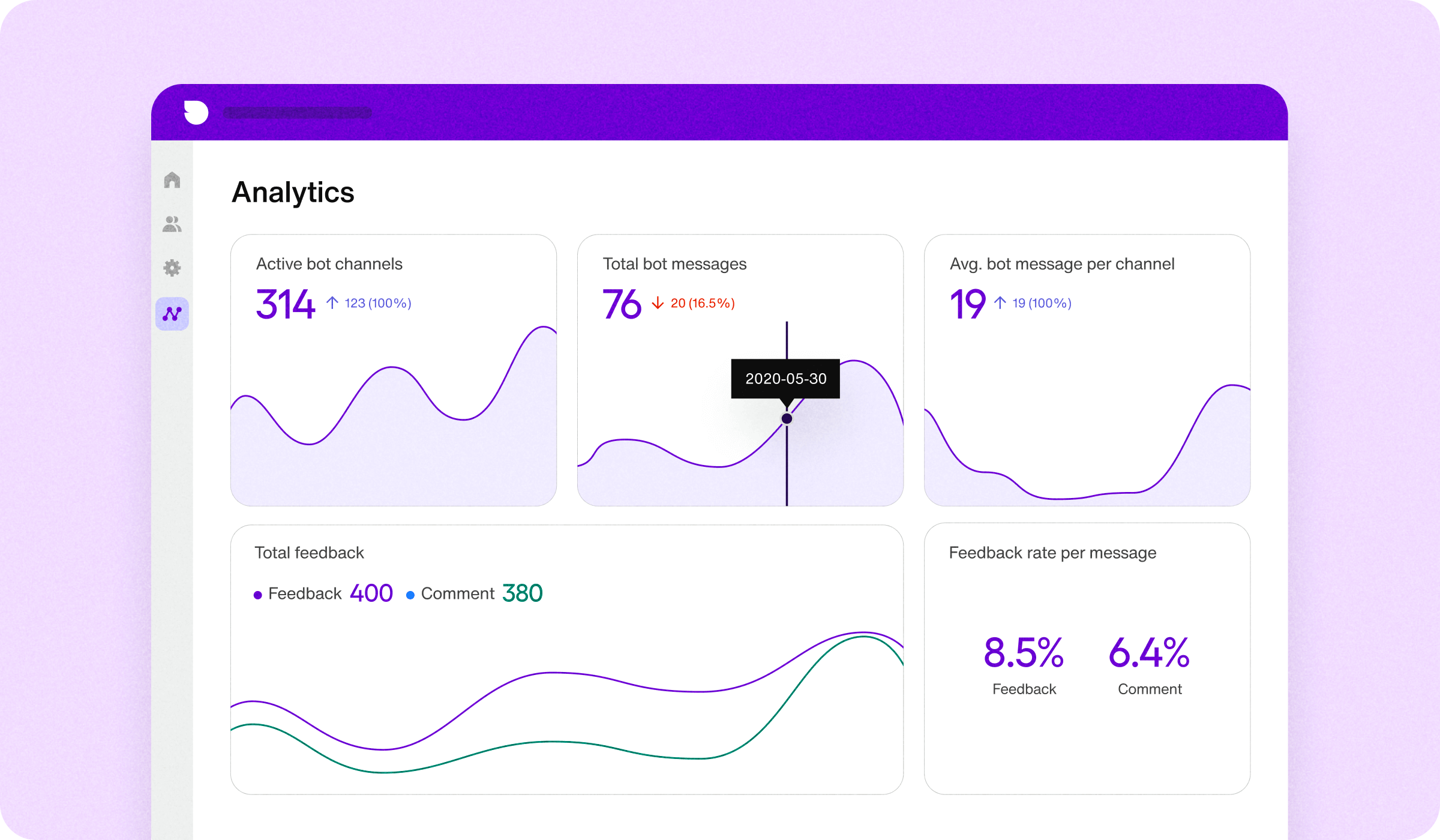
A good AI chatbot software will enable you to access reporting, KPIs, and analytics so you can evaluate success in the AI chatbot dashboard. This data can be used to improve bot performance, plus track and optimize the bot value against customer engagement metrics and costs so you can make the most of this valuable channel.
3rd-party data sources
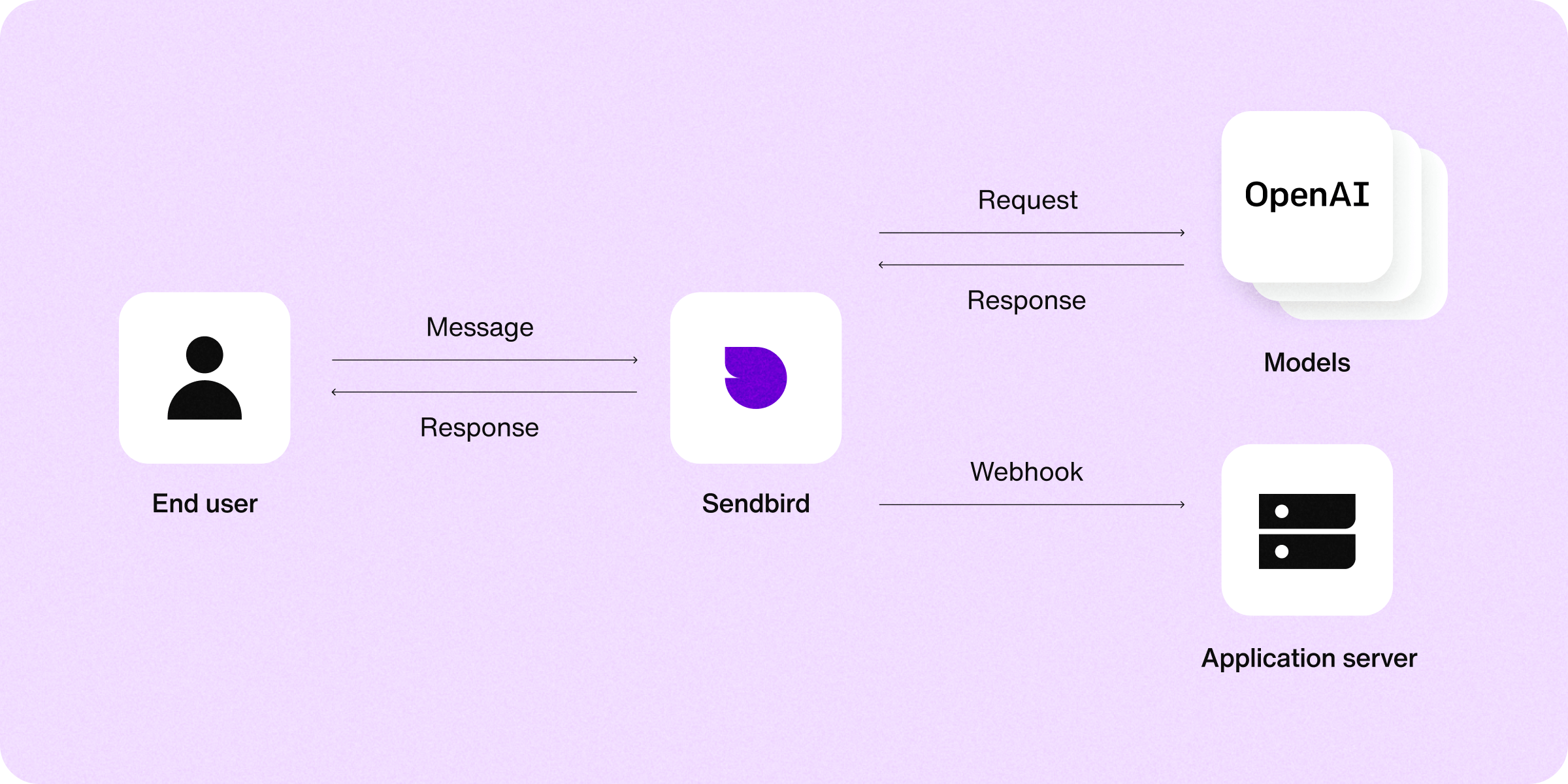
The best AI chatbots can extend their capabilities by interacting with external systems, APIs, or databases to perform specific tasks. For instance, you might want users to be able to ask the chatbot for a live weather forecast, sports scores, or stock data that’s stored on a 3rd-party site.
This capability, known as function calling, allows a bot to retrieve outside data via an API request based on conversation cues such as keywords, and instantly provide the real-time information to users in the bot widget.
Top-performing LLMs
Large language models (LLMs) are the foundational technology of AI chatbots, providing a core of general knowledge and enabling chatbots to understand language and generate relevant replies.
While all LLMs are trained on large internet datasets to form this base of knowledge, each will vary in price, performance, as well as data governance and compliance.
To find the right LLM for your budget and use case, it’s a good idea to compare the latest LLMs by their cost, speed, and conversational fluency. LLM leaderboards such as Huggingface can help.


Anywhere, anytime AI customer support
How to create an AI chatbot
Creating an AI chatbot may seem like a Herculean effort, but it’s surprisingly easy. This is because there are various no-code AI chatbot software that enable anyone to build a generative AI chatbot in minutes.
To create an AI chatbot, all you need is a good AI chatbot software and to follow these 6 basic steps below.
Define the chatbot’s purpose: Deciding on your use cases and scope will help you choose the AI chatbot software with the right features and scalability.
Decide where to deploy: Common places to deploy AI chatbots include websites, mobile apps, social media, messaging apps, and voice assistants.
Choose an AI chatbot platform: Technical people may want a chatbot framework instead of a no-code chatbot builder like Sendbird’s AI Chatbot. The tradeoff is flexibility of coding vs. the ease of a drag-and-drop editor that all teams can use.
Create your AI chatbot: Creating a chatbot takes a few simple steps, as you can see in this short video or this step-by-step guide to create an AI chatbot.
Test your AI chatbot: To ensure the chatbot offers the appropriate responses, you can pose common questions to it, or use the dedicated testing environment in the bot builder.
Publish via integrations: Once you’re happy with chatbot responses and design, you can publish it quickly using integrations with websites like GoDaddy, Shopify, Squarespace, Wix, and WordPress.
You can also watch this short video for a quick walk-through of how to create an AI chatbot:
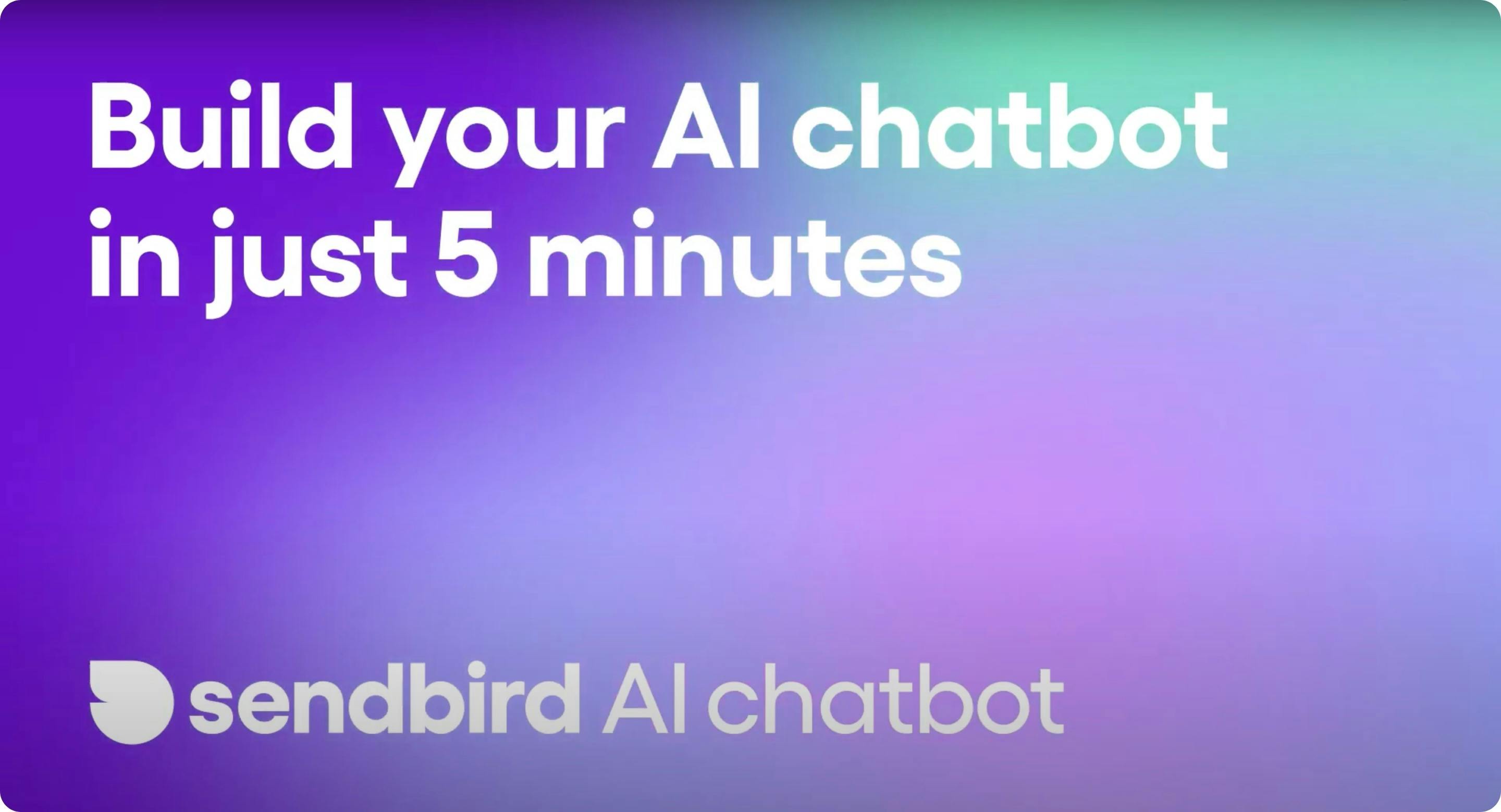
Final thoughts: What is an AI chatbot?
AI chatbots are a powerful tool for business, allowing you to instantly support, engage, and make recommendations to customers in a conversational way at the exact moment they need.
They’re a win-win for companies and customers, helping to increase engagement and elevate the customer experience while also reducing operational costs and boosting productivity.
With 8 in 10 decision makers planning to increase their investment in AI in the coming year, it’s clear that AI chatbots are here to stay.
If you want to level up your customer experience and streamline operations with AI chatbots, you’re in the right place.
You can create a custom AI chatbot for free in minutes using Sendbird’s no-code chatbot builder.

Reimagine customer service with AI agents

